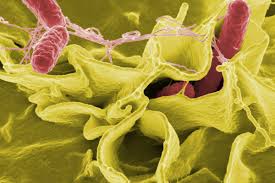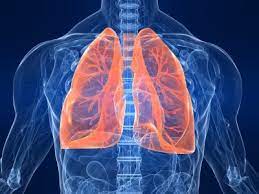The programme to eliminate various diseases namely Malaria, Lymphatic Filariasis, Kala-Azar, Tuberculosis, Leprosy have been implemented by the Government of India. The National Centre for Vector-Borne Diseases Control (NCVBDC) administers an umbrella programme, namely, National Vector Borne Diseases Control Programme (NVBDCP) for the prevention and control of vector-borne diseases. Under NVBDCP, three diseases namely Malaria, Filaria & Kala-Azar are under an elimination programme. These diseases are targeted for elimination, and not for eradication. Eradication of the disease is a permanent reduction to zero of the worldwide incidences of infection caused by a specific agent as a result of deliberate efforts; and when intervention measures are no longer needed.
The aims, objectives and targets are as follows:
-
-
- Malaria is targeted for elimination by 2030
- Lymphatic Filariasis is targeted for elimination by 2030
- Kala Azar is targeted for elimination by 2023
-
For Leprosy, the government is implementing the National Leprosy Eradication Programme (NLEP) with the goal of making India leprosy free. NLEP is a centrally sponsored scheme under the umbrella of the National Health Mission (NHM). NLEP is aimed to bring down the Prevalence Rate of leprosy to less than 1/10,000 population at district level; Grade II Disability rate per million population to Zero at district level; Grade II Disability to Zero among new cases and child leprosy cases to zero level. It also aims at generating awareness about leprosy disease.
For Tuberculosis, the Government is implementing National TB Elimination Programme (NTEP) with the goal of ending TB by 2025, five years ahead of the global targets of Sustainable Development Goals (SDGs) of 2030.
Detailed State/UT-wise budget for vector-borne diseases, Leprosy and TB is given at Annexure.
- The following steps are taken by the Government to achieve the targets:
Malaria
- Early diagnosis and radical treatment: Use of Rapid Diagnostic Test Kits, ASHA incentives for diagnosis & ensuring complete treatment
- Case-based surveillance and rapid response
- Integrated vector management (IVM)
- Indoor residual spray (IRS)- 2 rounds of IRS for vector control in areas with Annual Parasite Incidence >2.
- Long-lasting insecticidal nets (LLINs) / Insecticide-treated bed nets (ITNs): LLINs are being used in the programme to cover sub-centres with Annual Parasite Incidence >1.
- Larval source management (LSM)
- Epidemic preparedness and early response
- Behaviour Change Communication and community mobilization
Lymphatic Filariasis:
· Mass Drug administration (MDA) for disease transmission control. To accelerate disease elimination, an Accelerated Plan for Elimination of Lymphatic filariasis (APELF) 2018, triple Drug Therapy (Ivermectin + Diethylcarbamazine (DEC) + Albendazole) has been implemented in 30 districts and is being further scaled up.
· Morbidity Management & Disability Prevention (MMDP) targets 100% coverage for hydrocele surgery and home-based morbidity management services for lymphoedema cases.
· The achievement of<1% Microfilaria rate is validated by Transmission Assessment Survey (TAS).
Kala-Azar:
- Single Dose Liposomal Amphotericin B (LAMB) for treatment
- Use of synthetic pyrethroid in place of DDT for IRS
- Introduction of hand compression pumps in place of stirrup pumps for convenience and quality of IRS
- Revised incentives to PKDL patients from Rs. 2,000/- to 4,000/- and to ASHA from Rs.300/- to 500/- in 2018
- Pucca houses in KA affected villages have been constructed under PMAY-G – Total 25,955 houses in 2017-18 (1371 houses in Bihar & 24584 in Jharkhand)
National Leprosy Eradication Programme (NLEP):
- A well laid out Operational strategy for Active Case Detection and Regular Surveillance has been put in place, both in rural and urban areas, through ASHAs and Frontline Workers in order to ensure detection of leprosy cases on regular basis and at an early stage in order to prevent grade II disabilities
- Leprosy screening has been integrated with Rashtriya Bal Swasthya Karyakram (RBSK) and Rashtriya Kishore Swasthya Karyakram (RKSK) for screening of children (0-18 years)
- Leprosy screening has been integrated with the activities of Comprehensive Primary Health Care under Ayushman Bharat – Health and Wellness Centre (AB-HWC) for screening of people above 30 years of age
- Contact tracing is done and Post Exposure Prophylaxis (PEP) is administered to the eligible contacts of the Index case (Person diagnosed with leprosy) in order to interrupt the chain of transmission at the community level
- Various services are provided under the programme for Disability Prevention and Medical Rehabilitation (DPMR) i.e., reaction management, provision of Microcellular Rubber (MCR) footwear, Aids & Appliances, self-care kits etc.
- Reconstructive Surgeries (RCS) are conducted at District Hospitals/Medical Colleges/ Central Leprosy Institutes, and welfare allowance @ Rs 8000 is paid to each patient undergoing RCS
National TB Elimination programme (NTEP):
- Early diagnosis of all the TB patients, prompt treatment with quality-assured drugs and treatment regimens along with suitable patient support systems to promote adherence
- Engaging with the patients seeking care in the private sector
- Prevention strategies include active case finding and contact tracing in high risk / vulnerable population
- Airborne infection control.
- Multi-sectoral response for addressing social determinants.
********
Annexure
Financial assistance provided under integrated budget for VBDs, NLEP and NTEP for the current year
| Rs. In Lakhs | |||
| States/UTs | VBDs | NLEP | NTEP |
| Andhra Pradesh | 2182.36 | 160 | 5587 |
| Arunachal Pradesh | 6.78 | 95 | 1783 |
| Assam | 991.92 | 120 | 4828 |
| Bihar | 246.35 | 263 | 4118 |
| Chhattisgarh | 215.32 | 153 | 3832 |
| Goa | 4.68 | 5 | 322 |
| Gujarat | 1691.42 | 132 | 5755 |
| Haryana | 80.27 | 47 | 4454 |
| Himachal Pradesh | 1.67 | 26 | 1662 |
| Jharkhand | 327.82 | 190 | 4257 |
| Karnataka | 788.02 | 88 | 6992 |
| Kerala | 210.35 | 25 | 4163 |
| Madhya Pradesh | 33.03 | 198 | 7767 |
| Maharashtra | 75.82 | 430 | 10492 |
| Manipur | 1.00 | 20 | 2359 |
| Meghalaya | 152.00 | 35 | 1128 |
| Mizoram | 14.64 | 25 | 1414 |
| Nagaland | 0.56 | 75 | 1909 |
| Odisha | 154.17 | 219 | 5237 |
| Punjab | 123.26 | 66 | 4134 |
| Rajasthan | 113.14 | 62 | 4002 |
| Sikkim | 1.00 | 35 | 941 |
| Tamil Nadu | 48.06 | 165 | 6497 |
| Telangana | 21.97 | 132 | 5215 |
| Tripura | 655.86 | 22 | 1135 |
| Uttar Pradesh | 1879.45 | 420 | 13517 |
| Uttarakhand | 8.51 | 16 | 2227 |
| West Bengal | 83.33 | 195 | 7940 |
| Delhi | 0.00 | 85 | 1796 |
| Puducherry | 0.00 | 5 | 417 |
| Jammu & Kashmir | 0.00 | 28 | 2300 |
| Andaman & Nicobar Islands | 1.58 | 9 | 206 |
| Chandigarh | 7.85 | 9 | 418 |
| Dadra & Nagar Haveli and Daman & Diu | 52.45 | 10 | 323 |
| Ladakh | 0.00 | 2 | 390 |
| Lakshadweep | 0.00 | 9 | 62 |
| Total | 10174.64 | 3576 | 129579 |
*Upto 31st October, 2021
The Union Minister of State for Health and Family Welfare, Dr Bharati Pravin Pawar stated this in a written reply in the Rajya Sabha today.
Source PIB Delhi












